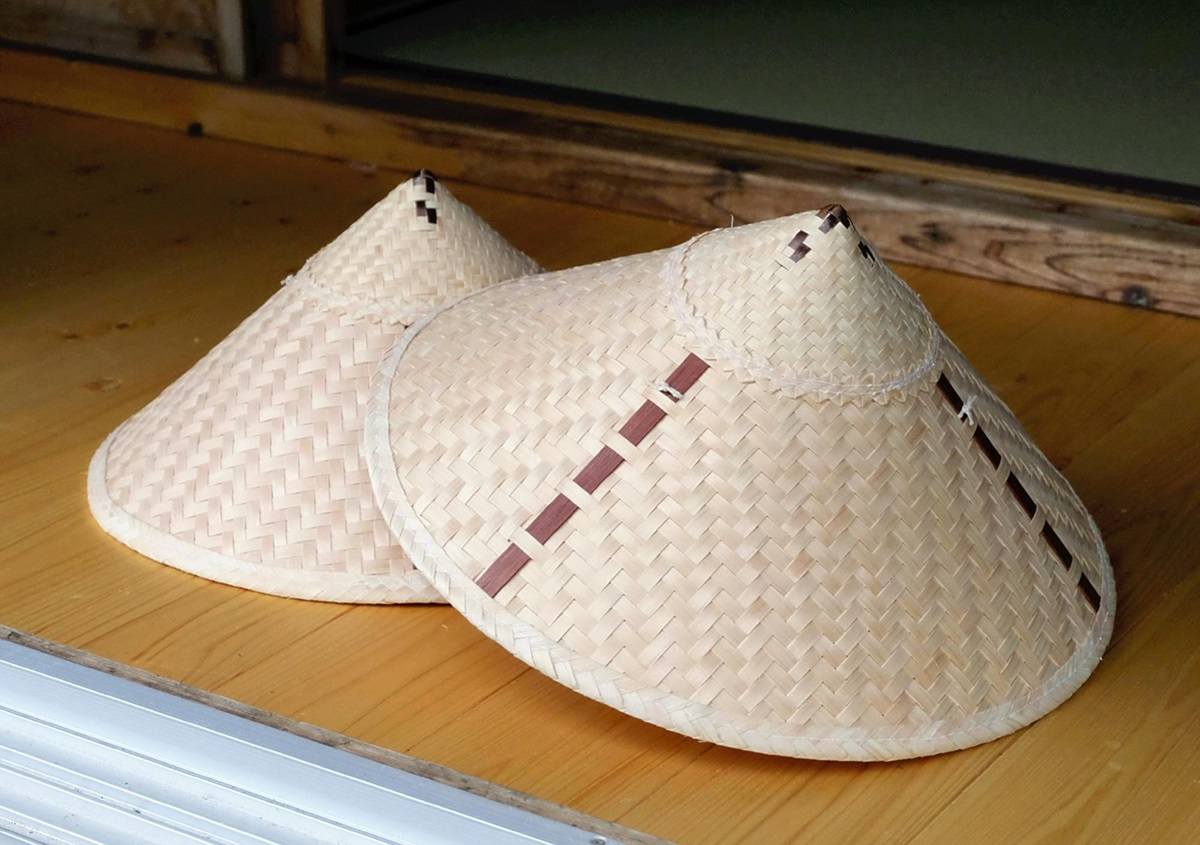Kenichi Umezaki weaves a minachigasa hat in Tanabe, Wakayama Prefecture (left), and hats made by him.
11:00 JST, July 20, 2024
TANABE, Wakayama — A craftsman new to the craft of making traditional hats typically worn by pilgrims on the historic Kumano Kodo pilgrimage routes has become the heir to the ancient craft.
Kenichi Umezaki, 66, from Fukuoka Prefecture, began making traditional minachigasa hats in April. The conical hat is made from thinly shaved Japanese cypress wood and has long been beloved from ancient to modern times by pilgrims who travel the route, which is now a World Heritage site on the Kii Peninsula. The hat’s lightness, breathability and cypress oil on the surface of the hat, which repels rainwater, have contributed to its longevity.

Minachigasa hats made by Kenichi Umezaki
The production of minachigasa hats goes back about 1,000 years. Even in the early 20th century, there were still eight workshops producing them in Tanabe, Wakayama Prefecture. But since the 1960s, Yasuo Shiba, 103, was the only one making them.
About 20 years ago, Umezaki visited Shiba after moving to Tanabe. Umezaki asked the craftsman — then in his early 80s — to teach him how to make the traditional hats.
Shiba initially refused, saying, “I can’t do it,” but Umezaki never gave up. He tried making hats his way and brought them to Shiba, who eventually began giving him tips. Shiba finally acknowledged Umezaki as his successor in October of last year.
Shiba found it physically difficult to continue the craft and was prepared for its production to end with him as the last craftsman.
“I was relieved to be able to pass the tradition on to the next person,” Shiba said.
Although Umezaki started producing hats at home, it still takes him about three days to produce one hat.
“I can’t make them as good as Shiba yet. But I want to inherit the tradition and pass it on to someone in the future,” Umezaki said.



